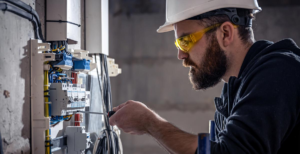Search engines like Google continuously find, index and organize webpages. When you type a query into a search engine, the bots quickly go through their indexed list of pages to find ones that match your query.
Emerging verticals such as voice, local and image search offer nuanced opportunities, but most SEO efforts are based on three core concepts. These are keywords, content and links. Click Rank Boss to know more.

Keywords are the words or phrases that search engines use to determine the relevance of your website. They are an essential part of your SEO strategy, and must be used correctly. The wrong keywords can result in missed traffic, low search engine visibility, and even lower organic rankings. This can be costly and time-consuming, but the right keywords can help you get the most out of your marketing efforts.
The best way to choose keywords is by using a keyword research tool. These tools provide a list of potential keywords and their search volume, as well as the difficulty of ranking for them. These tools can also help you find related keywords, which are similar but less popular, and can be used to expand your keyword list.
When choosing your keywords, it is important to consider the search intent of your audience. Search engines like Google prioritize user experience, and they are getting better at determining whether a site provides the best possible user experience. A search query that includes a keyword indicates that the searcher is looking for specific information about the product or service they are interested in. A search that includes a brand name, such as “mailchimp guides,” suggests a higher level of pre-qualification and is more likely to lead to a conversion.
There are two types of keywords: head terms and long tail. Head terms are more popular and generally indicate a high level of search intent. Long tail keywords are more descriptive and usually indicate a lower level of search intent. Long-tail keywords are easier to rank for, because there is less competition. They can also be more relevant, which can result in higher organic click-through rates.
The key to finding the best keywords is to find ones that are highly relevant and specific to your content. Relevance helps you target the right audiences, and specificity ensures that your content aligns with user intent. This increases the likelihood of organically ranking higher on search engines, and ultimately attracting more quality traffic.
Content
Creating SEO content requires a deep understanding of your audience and the search engines. The goal is to produce helpful, quality content that answers all of your audience’s questions while also being optimized for specific keywords. This can include blog posts, articles, videos and infographics. By incorporating these types of content into your strategy, you can improve the visibility and ranking of your website.
The first step is to create a list of keywords associated with your business. Use a tool such as Google’s Keyword Tool or SE Ranking to identify popular keywords and their volume. This will help you to determine which keywords are most important for your content.
Once you have a list of keywords, create content that addresses those topics. You can use a word cloud or tally to see which words are most important for your content, and then optimize your content around those terms.
You can also optimize your content by taking advantage of semantics. This means including natural variations and synonyms of a given term, improving readability and enhancing your ranking. For example, instead of “content marketing,” you can write content that includes phrases such as digital marketing and online marketing. This will allow you to rank higher in the search results and increase your chances of attracting more links.
In addition to optimizing your content, you should also make sure that it is easy to find. You can do this by ensuring that the URL is clear and concise, avoiding numbers and underscores, and including a keyword in the slug (e.g., /content-optimization-guide-2022). This will help you to rank in a variety of different search engine results.
The best SEO content is not only informative, but also interesting. It should provide value to your readers and keep them on your site longer. This will not only improve your ranking, but it will also help you establish trust and brand awareness. In order to create this type of content, you need to be creative and use your resources wisely. You can use a tool such as GatherContent to streamline your content creation process and ensure that your articles, landing pages and other content meet your quality standards.
Link building
Link building is one of the most important aspects of search engine optimization. It refers to the process of acquiring hyperlinks from other websites to your own website. Whether or not these links are organically created or purposefully built, they help search engines identify and rank your pages for certain keywords. It is also one of the few aspects of SEO that you have total control over. The best way to build links is by creating valuable content that attracts links naturally. This can include articles, white papers, infographics, videos, or podcasts. Ideally, you will focus on linking to other high-quality websites in your niche.
The reason why links are so important is that they tell search engines that your page is popular and meaningful. Google’s algorithm originally rewarded websites based on their number of links from other sites. Since then, it has evolved into a more complex formula that takes into account many other factors.
Manual link building is a time-consuming and expensive process, but it can be incredibly effective if done correctly. However, it’s important to remember that link quality is more important than quantity. You should only invest the time and resources into building links that are relevant to your audience and will be beneficial to them. In addition, you should always avoid black-hat techniques like buying links, which are against Google’s terms of service and can be devastating to your search engine rankings.
While many people think that link building is dead, it’s actually a critical part of any SEO strategy. In fact, a well-executed link building campaign can increase your site’s search engine optimization (SEO) results significantly. Here are some ways to improve your link-building strategy:
The first step is to create a list of websites and blogs that you want to link to. This list should be based on a combination of your industry and your interests. For example, you may want to target sites with high DA or those that publish useful guides. You can use tools like Ahrefs to find these opportunities. Once you have your list, reach out to each website and ask them if they would be interested in adding a link to your page.
Analytics
As a part of search marketing, analytics provides vital information that can help marketers and SEO specialists make more informed decisions about how to improve their websites. This includes the use of metrics such as bounce rate and dwell time. This information can also help identify issues such as slow loading pages or missing keyword opportunities. SEO analytics also helps marketers and SEO specialists monitor their current optimization efforts and decide where to invest their resources.
It is important to remember that one size does not fit all in terms of SEO ranking factors. The best approach is to take a holistic view of your site’s performance and consider the impact of all of the different factors that may affect your website.
Using Google Analytics, you can see how well your SEO strategies are performing, and what needs to be improved. This data can help you determine which keywords to target and how to structure your content. This will also help you increase your organic traffic, which can lead to more sales and leads.
One of the most important aspects of SEO is to understand your audience. This is why you should track the performance of your keyword strategies, and look at the behavior of your visitors to find out what they want from your website. This will allow you to create better content that matches your target audience’s expectations.
Another important aspect of SEO is to analyze your competitors’ websites and identify their weaknesses and strengths. This can be done with tools such as SimilarWeb and Ahrefs. The tool allows you to collect and compare a wide range of information on your competitor’s domain rank, referring domains, and other metrics. You can also set up a competitor tracking dashboard to easily automate the flow of data for your SEO campaign.
It is also important to monitor your SEO campaign’s performance over time, and compare it to your competitors’ performance. This can be done using Google Analytics or a third-party tool such as Databox. This will allow you to identify the key performance indicators that are most important to your business, and will help you plan future campaigns accordingly.

